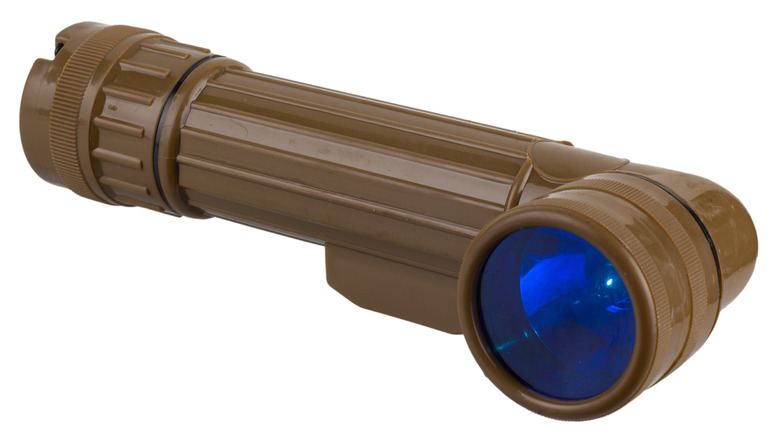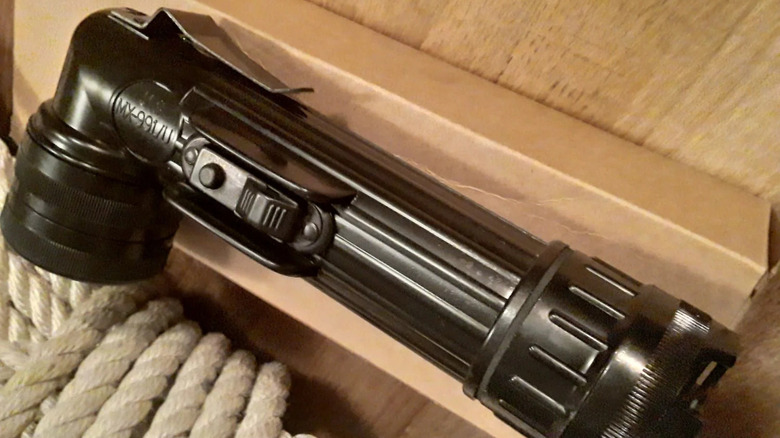Why Are Military Flashlights Angled?
Flashlights have gone through a lot of innovations since the first "modern" flashlight lit up in 1899. Invented by David Misell, the tubular flashlight used three dry cell batteries end to end, much like the ones we use today. Brighter than a candle but unreliable and dimmer than today's best pocket flashlights, Misell's light had a long way to go until it found its way into the military by World War I. The design has continued to change throughout military history, bringing us to the very popular and peculiar right-angled flashlights.
This angle-headed flashlight was originally called the TL-122, and was built to be latched onto a soldier's web gear to free their hands in case they needed to grab a weapon. Since the flashlight was hanging downward, the angle allowed the light to still shine forward. This flashlight design has remained in the military for over eight decades now, a lightweight and durable ideation that continues to be useful for hands-on illumination. It's a design still used in military spec flashlights today.
The history of the right-angled military flashlight
A lot of people — whether they are civilians or in the military — prefer military flashlights due to their ruggedness, and there are plenty of tactical flashlights that the general public can buy. But how did we get to the powerful tactical right-angled flashlights you're using now?
Heading into World War I, the British Army decided to use a boxy flashlight design that was perfect for map reading at night. While this design lasted into WWII, Americans decided to opt for a flashlight with a 90-degree angled head. The first was called a TL-122, a simple flashlight that attached to the soldiers' web gear and shined light forward while keeping hands free. The original version was produced by USA Lite, Bright Star, and Micro Lite.
This style flashlight started out brass but switched to the plastic model T-122B in 1943. This design was known for smelling bad due to the plastic formulation process back then, but this was corrected with the TL-122C in 1944. By the Vietnam War, an improved plastic model known as the MX-991/U was being used, featuring a more rugged high-impact case. It had a second lens ring, lens filters, and a spare bulb. This version was produced by GT Price and Fulton. The overall design has not changed much since.
Fulton is currently the flashlight manufacturer for the U.S. military, continuing to produce the simple, right-angled flashlight in its Wauseon, Ohio facility. Whether for a "tunnel rat" or general, Fulton's flashlights have provided a strong light source throughout WWII, the Korean War, Vietnam, Afghanistan, and Iraq — all at a right angle, of course.

